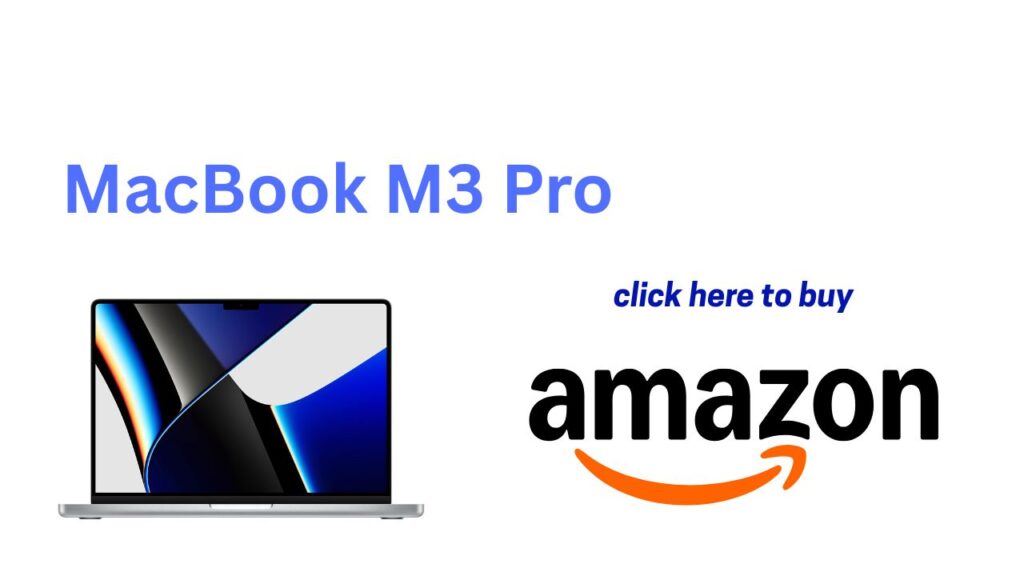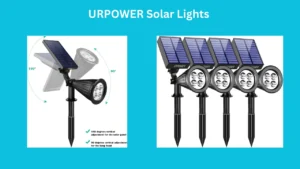Introduction
The MacBook M3 Pro/Max family represents Apple’s next step in the ongoing transition from Intel-based MacBooks to Apple Silicon. Combining generational improvements in CPU and GPU performance, power efficiency, and system integration, the MacBook M3 Pro/Max aims to satisfy demanding professionals and power users while retaining the hallmark macOS experience. This review article examines the MacBook M3 Pro/Max in-depth: what they offer, who should consider them, their primary features, and practical buying guidance — including notes on pricing considerations and Amazon availability.
Keyword: MacBook M3 Pro/Max
Overview of MacBook M3 Pro/Max
Apple’s M-series chips have been a major focal point for recent Mac hardware refreshes. The M3 family continues that trend with improvements in performance per watt, memory architecture, and on-chip neural engines. The M3 Pro and M3 Max are the higher-tier variants designed for professionals. Key distinctions between them typically involve CPU core counts, GPU cores, unified memory capacity, and memory bandwidth — with the Max variant aimed at the heaviest workloads.
Design and Form Factor
- The MacBook M3 Pro/Max models generally ship in Apple’s modern slim unibody aluminum chassis. Expect high-resolution displays, thin bezels, a refined keyboard and trackpad, and a selection of ports aimed at professional users (e.g., HDMI, SD card slot, Thunderbolt/USB‑4 ports, MagSafe).
- Build quality remains premium, with emphasis on durability and portability for mobile professionals.
Targeted Use Cases
- M3 Pro: Geared to creative professionals, software developers, data analysts, and video editors who need strong multi-core CPU performance and mid-to-high GPU capability. Ideal for 4K video editing, compiling large codebases, and running sophisticated productivity workflows.
- M3 Max: Targeted at heavy-duty creatives and professionals — e.g., high-end video post-production (8K workflows), 3D rendering, large ML/AI model inference on-device, and users who require very high GPU performance and large unified memory pools.
Technical Features & Improvements
Below is a summary of typical features and improvements you can expect from the MacBook M3 Pro/Max generation (based on Apple’s design direction and M-series progression).
1. Chip and Performance
- CPU: Multiple high-performance and efficiency cores arranged to balance single-thread and multi-thread workloads. Improved per-core performance versus prior generation chips, yielding faster compile times, responsiveness, and compute throughput.
- GPU: Significantly more GPU cores on Pro and especially Max variants to accelerate graphics workloads and GPU compute tasks (e.g., rendering, effects, and machine learning tasks).
- Neural Engine: Faster on‑chip neural engine for accelerated machine learning inference, image/video analysis, and other AI-accelerated features.
2. Unified Memory and Bandwidth
- Unified Memory Architecture (UMA): Enables CPU, GPU, and Neural Engine to share the same pool of high-speed memory, reducing data-copy overhead and improving throughput.
- Higher Memory Configurations: The Pro supports higher RAM options than base models, while the Max supports very high capacities (useful for heavy video timelines, 3D scenes, or large datasets).
- Greater Memory Bandwidth: Particularly on Max models, which improves performance in GPU-heavy tasks and large data movement.
3. Display
- High-Resolution, Color-Accurate Display: Typically Liquid Retina XDR or similar with high brightness, wide color (P3), and excellent contrast for color-critical work.
- ProMotion / High Refresh Rate: Smooth scrolling and responsive UI interactions (where applicable).
4. Battery Life & Thermal Efficiency
- Thanks to improved performance-per-watt, M3 models offer excellent battery life for sustained workflows, with new designs often pushing the envelope on idle and mixed workloads. Thermal systems in the Pro/Max models are tuned to maintain higher sustained clocks for longer under load.
5. Ports and Expandability
- Professional MacBook models generally include multiple Thunderbolt/USB‑4 ports, HDMI, SD card reader, and MagSafe charging — addressing many professional workflow needs without dongles.
6. Software Integration
- macOS increasingly leverages Apple Silicon with optimizations across system services, creative apps (Final Cut Pro, Logic Pro), and third-party software (Adobe Creative Cloud, many developer tools). Rosetta 2 compatibility remains for legacy Intel apps, but native M3 apps show the best performance.
Who Should Buy a MacBook M3 Pro/Max?
Choosing between MacBook variants depends on workflow intensity, budget, and future-proofing needs. Here’s a buyer-oriented breakdown:
- Casual Users and Students: Likely overkill. Base M-series MacBooks (e.g., M3 or M3 Pro entry models depending on configuration) or less expensive models may be more cost-effective.
- Millennial Professionals / Content Creators: If you routinely edit 4K video, run pro audio projects, or do frequent photo editing, the M3 Pro offers a balanced mix of performance and portability.
- Power Users and Creative Studios: If you regularly work with 6K–8K footage, complex motion graphics, 3D rendering, or large machine-learning tasks, the M3 Max is the better fit for its larger GPU core counts and expanded unified memory.
- Developers and Data Scientists: If your workloads involve large builds, virtualization, or data science model training/inference, consider Pro for most, Max for the largest workloads and in‑machine acceleration needs.
- Future-Proofing/Investment Buyers: If you plan to keep a machine for many years and want the best possible performance margin, the Max offers longevity at the expense of higher cost.
Practical Buying Guidance & Pricing (Including Amazon Considerations)
Note: I don’t have live internet access to verify current prices. The following is general guidance on how to approach buying and price expectations.

Price Range Expectations
- MacBook M3 Pro/Max models are premium laptops and are priced accordingly. Expect a substantial price increase for Pro over base models, and another significant step up for Max and high-RAM configurations.
- Pricing depends strongly on configuration: CPU/GPU core counts, unified memory (RAM), and SSD capacity.
Amazon and Other Retailers
- Amazon often lists new MacBook models through a combination of Apple-authorized resellers, official Apple Store listings, and third-party sellers. Availability can vary and occasional discounts appear, but Apple devices commonly sell near MSRP unless a sale or refurbished model is available.
- For the best price points:
- Check Apple’s official refurb store for certified refurbished units with warranty.
- Monitor authorized resellers (e.g., major electronics retailers) for occasional discounts, holiday sales, or student-education pricing.
- On Amazon, look for listings sold by reputable sellers or “Ships from and sold by Amazon.com” to reduce risk.
- Compare prices across marketplaces and factor in shipping, taxes, and return policies.
Are They Affordable on Amazon?
- “Affordable” is relative. MacBook M3 Pro/Max models typically carry premium pricing and so are less likely to be found at steep discounts on Amazon immediately after release.
- Over time, Amazon may list price reductions during major sales events (Black Friday, Prime Day) or for slightly older configurations once newer models appear.
- If budget is a priority, consider:
- Lower-tier M3 models (non‑Pro/Max).
- Previous-generation MacBook Pro (M1/M2 Pro/Max) refurbished or on sale.
- Apple-certified refurbished units.
Kinds / Configurations to Consider
When buying a MacBook M3 Pro/Max, consider the following configuration choices and their implications:
- CPU/GPU Configuration: Higher core counts provide better multi-thread and GPU throughput. Choose based on workload — more cores for rendering, scientific compute, and parallel tasks.
- Unified Memory (RAM): Essential for heavy multitasking, large video timelines, and memory-bound workloads. Max models typically allow larger RAM capacities (e.g., 64GB/96GB+ options).
- SSD Storage: Choose enough storage for your workflow; SSD upgrades via Apple are costly, so plan ahead. External fast NVMe via Thunderbolt can be a workaround for large media libraries.
- Display Size: MacBook Pros often come in different sizes (e.g., 14-inch and 16-inch); choose between portability and maximum screen real-estate.
- Connectivity: If you rely on many peripherals, favor models with more ports or plan for high-quality docking solutions.
Real-World Performance (Expected)
While exact benchmark numbers depend on final configurations and testing, users can expect:
- Faster single-thread performance than preceding Apple Silicon chips, benefiting apps reliant on single-core speed.
- Larger gains in multi-core and GPU-bound tasks, especially on Max configurations.
- Considerable energy efficiency improvements: longer battery life during mixed workloads and lower fan noise for light-to-moderate tasks.
Pros and Cons
Pros:
- Exceptional performance-per-watt and sustained performance for pro workloads.
- Unified memory architecture simplifies data flow between CPU and GPU.
- Excellent battery life for a pro-class machine.
- macOS ecosystem and optimized creative/pro apps.
- Solid build quality and high-quality displays.
Cons:
- Premium price, especially for Max and high-RAM configurations.
- Limited user-upgradability (RAM and internal SSD typically soldered/non-upgradable).
- Availability and discounts can lag behind Windows-based competitors in price-sensitive segments.
- Some niche professional apps may still need optimization for Apple Silicon, though this is rapidly improving.
Final Recommendations
- If your work involves professional video editing, motion graphics, 3D rendering, or extensive ML workloads: strongly consider the MacBook M3 Max with a high unified memory and robust GPU configuration.
- If you need a powerful, portable machine for photo editing, software development, and 4K video: the MacBook M3 Pro offers an excellent balance of price, performance, and portability.
- If budget is a key constraint and your workflows are moderate: consider lower-tier M3 models, older Pro/Max generations on sale, or certified refurbished units.
- For buying on Amazon: verify seller reputation, check return/warranty terms, and compare against Apple’s refurb and authorized reseller offers. Watch major sale events for potential discounts.
How to Check Current Prices and Deals
- Search Amazon for “MacBook M3 Pro” or “MacBook M3 Max” and filter by seller (Amazon vs third-party), new vs certified refurbished, and read seller ratings and return policies.
- Compare with Apple’s official store and authorized resellers for student discounts, trade-in offers, or refurbished stock.
- Use price-tracking tools or browser extensions to monitor historical pricing and set alerts for drops.
Conclusion
The MacBook M3 Pro/Max pushes Apple’s professional portable computing forward, delivering stronger CPU/GPU performance, improved efficiency, and advanced system-level integration. They are particularly compelling for professionals whose workflows benefit from high GPU counts and large unified memory. The cost is premium — reflecting Apple’s positioning — so buyers should match configuration choices to real-world needs, consider refurbished or previous-generation alternatives if budget constrained, and shop around (including Amazon) for competitive offers.




